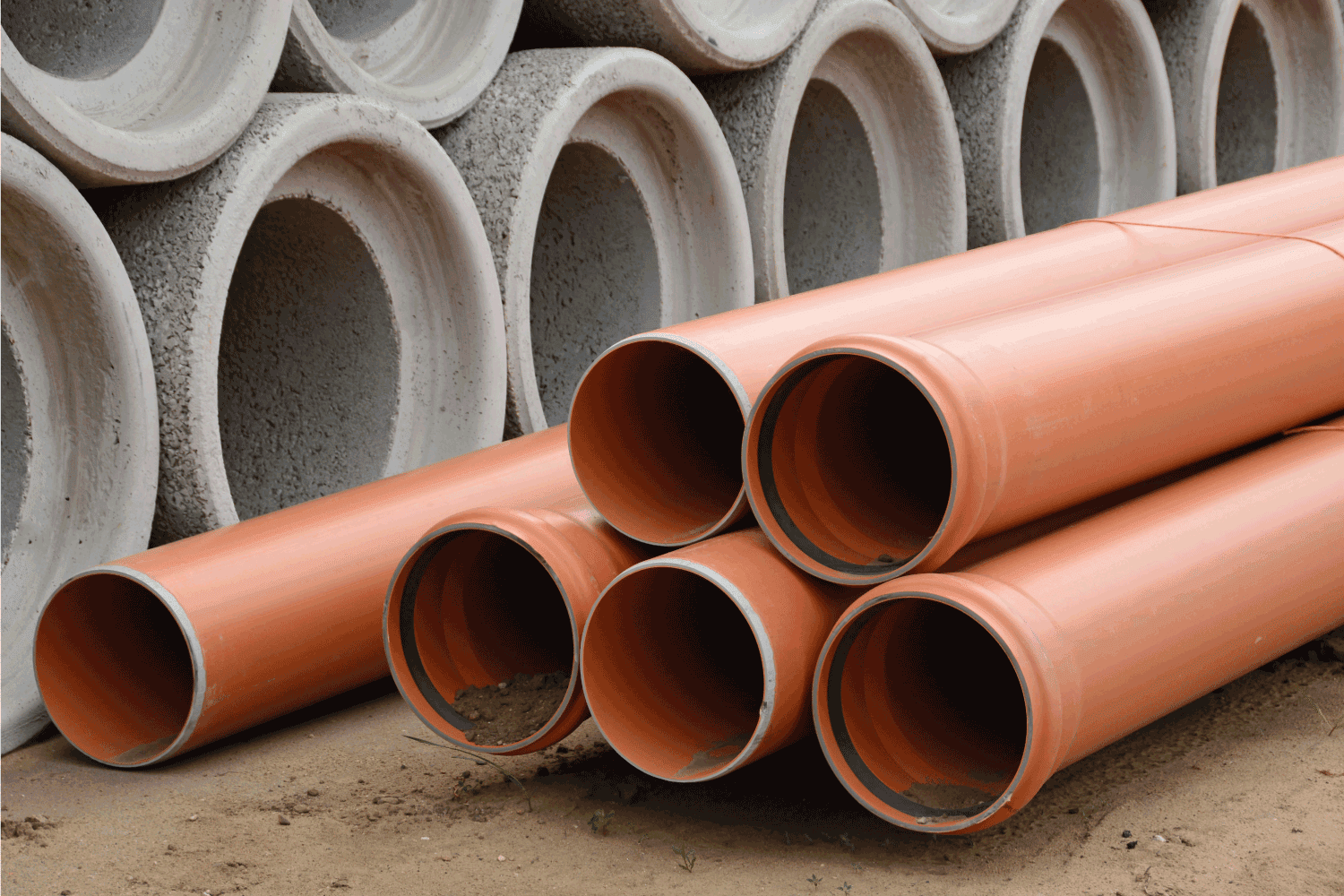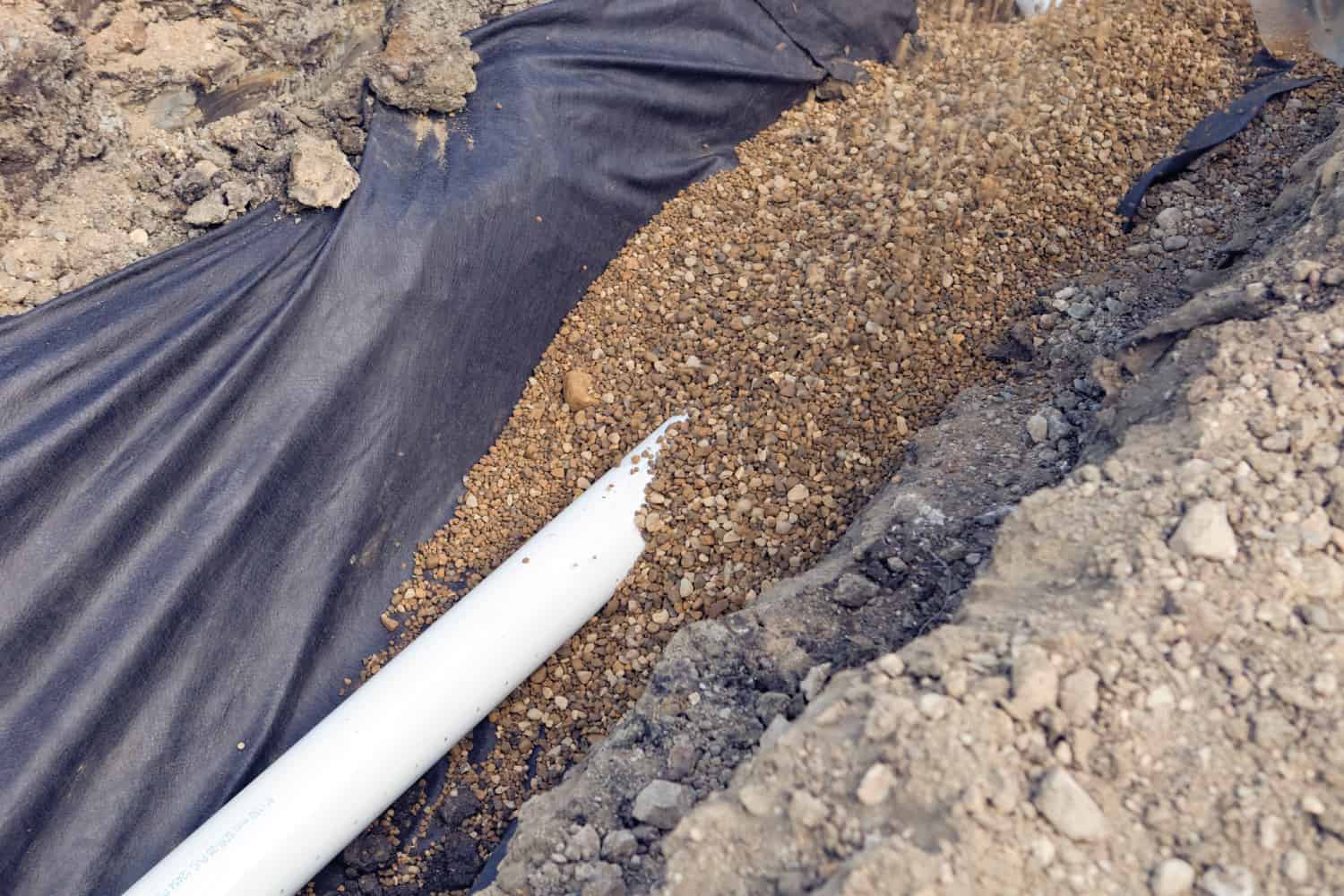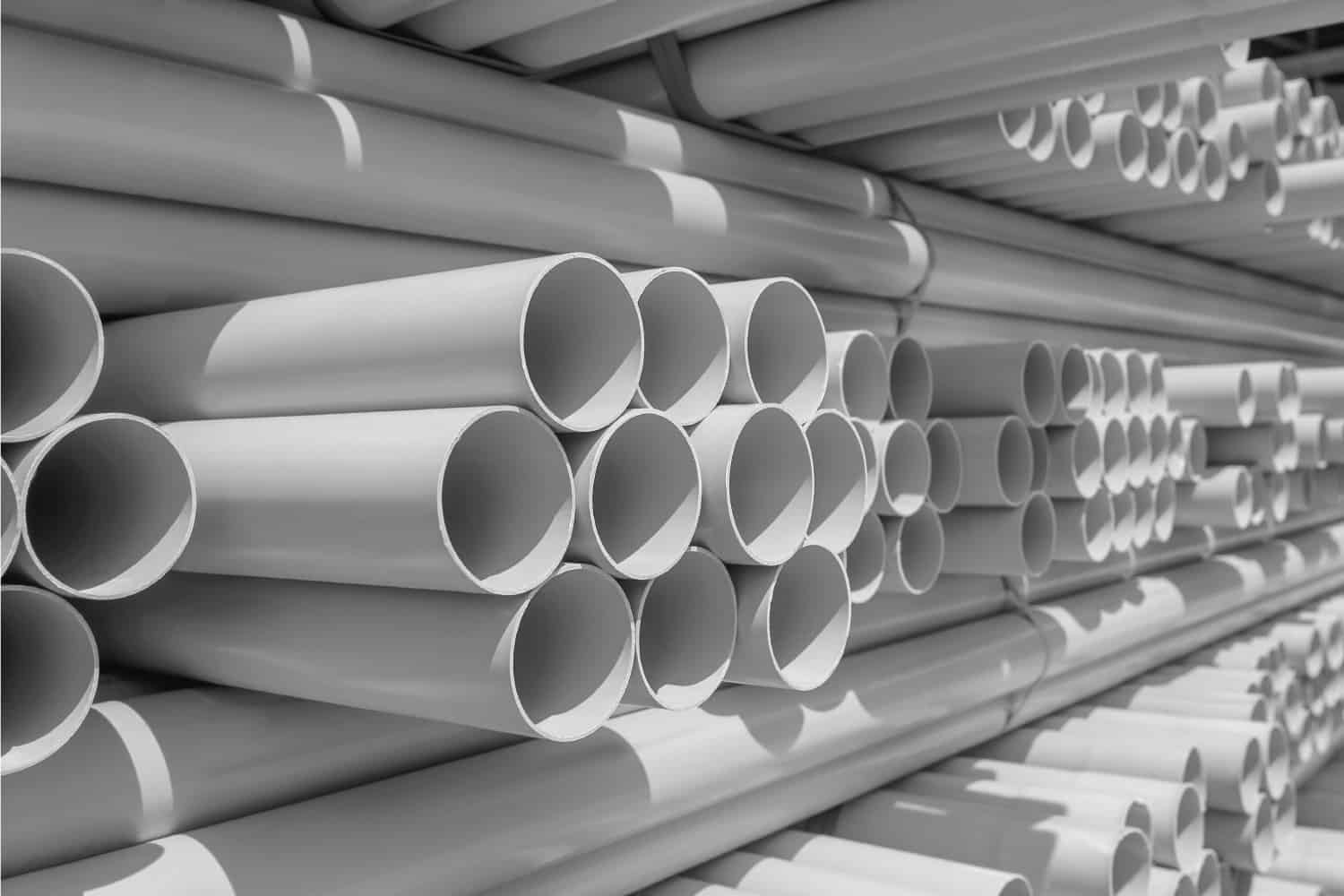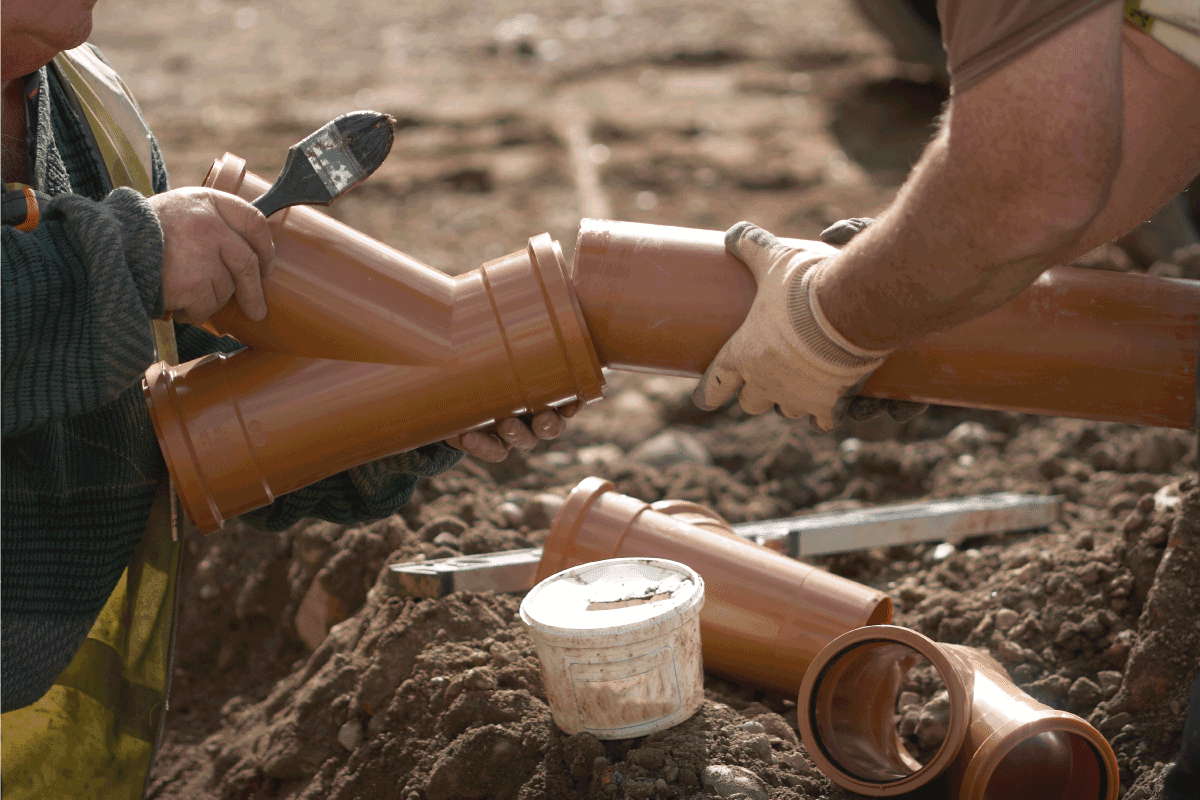A functioning drainage system is crucial for every home. It is necessary to choose the best type of pipes for drainage since, in a drainage system, water exerts a lot of pressure on them. We have looked up the best kind of pipes for drainage, and here is what we found.
Polyvinyl Chloride pipes (PVC) are the best choice for underground drainage due to their durable nature. PVC pipes are malleable and come in almost any size. These pipes can withstand lots of environmental and water pressure and last for very long periods.
Of course, there's more to it than just claiming PVC piping is the best choice. You might want to know your options. Additionally, some pipes are better for other situations. If you'd like to know this and more, keep reading ahead.

What Are the Types of Drainage Pipes?

All of the piping mentioned below have multiple, different uses but, they also have specific applications of their own. Below are the best drainage pipes available in the market and their applications.
PVC Drainage Pipes
PVC or Polyvinyl Chloride pipes are the most popular choice when it comes to drainage systems. The primary reason for that is the durability of the material. These pipes are very pliable and can come in almost any size you want. Another pro of PVC pipes is that they are eco-friendly.
Concrete Drainage Pipes
Concrete pipes are a go-to option for projects that demand no-leaks. It is why they are used primarily in industrial-level drainage systems. Moreover, concrete pipes can also act as an exterior shell of drainage pipes for extra durability. Concrete pipes are somewhat durable, hard to work with, and very difficult to clean.
Polyethylene Drainage Pipes
Polyethylene pipes are by far the most flexible type of pipes. Due to their great flexibility, Polyethylene pipes are also way easier to install. These pipes are best suitable for transporting water in small spaces.
High-density polyethylene pipes are more durable than PVCs. They can withstand extreme weather conditions as well as underground pressures better. The only drawback with HDPE pipes is the high cost.
Smooth Wall Drainage Pipes
The smooth wall drainage pipes are best for projects that involve unidirectional water transfer. These pipes are harder to install. But once they are in the right place, the smooth wall drainage pipes will last you for ages.
Single Wall Corrugated Drainage Pipes
For people looking for an inexpensive and easier-to-install drainage pipe option, Single wall corrugated pipes would be a favorable option. However, the main drawback of this type of pipe is that they are prone to get clogged.
Dual-wall Corrugated Drainage Pipes
The dual-wall corrugated drainage pipes are the perfect solution for people looking for low-cost drainage pipes that do not clog. As the dual-wall corrugated pipes have a smooth interior, they do not face the same clogging problem as the single-wall corrugated pipes.
Which PVC Pipe Is Best for Underground Drainage?

When it comes to underground drainage, PVC pipes are the best option. All PVC pipes work well for drainage. However, PVC-U pipes are more fitted for the job.
PVC-U stands for unplasticized PVC. It means that no plasticizers are in the compound during manufacturing. This type is conventional in drainage, sewerage waste, and transportation of drinking water.
One of the main reasons the PVC-U pipes are considered the best pipes for underground drainage is that they are durable. These pipes are used for industrial purposes as well since they last longer. Generally, the PVC-U pipes can last for at least 100 years. Moreover, the PVC-U pipes are 100% recyclable and environmentally friendly.
What Pipe Should I Use for Gutter Drainage?
Many people ask the same question if they can use the PVC pipes for the gutter. The short answer is yes, you can, and you should use the PVC pipes for gutter drainage. As said previously, PVC pipes are long-lasting and can withstand a great deal of pressure. And it makes the pipes suitable for drainage.
How Deep Do You Bury a Drainage Pipe?
For downspout drainage pipes, dig a 12- to 14-inch deep trench. In the case of a flat lot, the pipes will go deeper the further they extend. It is why you should create a ⅛-inch of fall for every foot of pipe that you are using.
Furthermore, the gutter drainage pipe should not be deep under the non-compacted fill dirt. Because as time passes, it can cause the piping to develop a backward or reverse slope. It can also cause the piping to kink or break.
Can I Install a French Drain Myself?
Yes, with the materials and a well-written guide, you can install a french drain by yourself. So, if you are interested in installing a French drain, then this guide would be perfect for you. Let's go over the steps to embark on your journey.
How To Install a French Drain
To install a french drain pipe, you will need the following materials at hand:
- Shovel
- Topsoil
- Striping spray paint
- 6' drain pipe (or more, if needed)
- Gravel
- Sand
- 1 x roll of landscape fabric
- Landscaping stones
- Turf
Mark Site for Draining and Rerouting
After you have got the supplies needed, it is time to mark the area for rerouting the drainage water. Choose somewhere that is clear of all sorts of obstructions as shrubs, trees, and posts.
The location should also be away from neighboring properties as excess water can damage that. Lastly, choose an area that has a downward slope at least one meter from the wall. It will make the drainage process easier.
After you have chosen the area for installing the french drain, mark the route with stripping paint. Make sure to use something bright and easily detectable.
Create a Trench and Add Gravel
Now with the help of a shovel, dig a 6-inch wide trench. Keep in mind that the depth should not be as deep as the nearest foundation. Moreover, a trench should run parallel to the building and horizontal to the slope. After that, layer 3 inches of gravel in the pit.
Add Fabric Lining
Now get the landscape fabric lining and layer it on the entire span of the trench. However, leave around 10 inches of fabric lining on both ends of the trench.
Insert French Drainage Pipe
Place the drain pipe on top of the landscape fabric lining and add more gravel to it. At this point, the top of the drain pipe and ground surface should be 5 inches apart.
Fold Excess Fabric Lining
Fold the excess fabric lining. It will protect the drain pipe from harsh weather and pressure.
Fill and Cover the Tench
Finally, with the help of the shovel, fill the ditch with soil and topsoil. After that, add some stones on top of it.
Of course, there's a limit to what words can do to guide you. So, if you need visual help, here's a YouTube video:
Should You Use PVC or Corrugated Pipe for Drainage?

When it comes to pipes for drainage, PVC pipes are the clear winner, and here is why.
Corrugated pipes are much easier to work with because they bend for easy connections and turns. The installation of corrugated pipes is glue-free and fast. Furthermore, these pipes are lightweight and hence easier to carry. Lastly, corrugated pipes are inexpensive.
However, at the same time, the corrugated pipes are not durable and are easy to damage. They are prone to get clogged and are harder to clean. All of these reasons make them not suitable for drainage.
On the other hand, even though PVC pipes are hard to work with and not easy to install, they offer more benefits. For starters, PVC pipes are durable, resistant, stronger, and can withhold pressure and weight. They are less likely to get clogged and are easier to clean. Lastly, bellies or low points in the pipe runs are less likely to occur.

Final Takeaway
Choosing a type of material regardless of the situation can be a difficult task. There are so many options to consider. And, if you're a beginner in this area, the vast amount of information out there can confuse you more than it might help. We hope you found the information above helpful!
Before you go, do you have other PVC piping concerns? Like most materials, there will be a time where you might need to do some repairing. If you'd like to look at how you go about repairing PVC pipes, check out our post here.
Are you living in an old home? You might have galvanized piping. While it's outdated in its usage, many homes still have them today. If you'd like to find out how to prevent them from rusting, check out our post here. Until next time!
